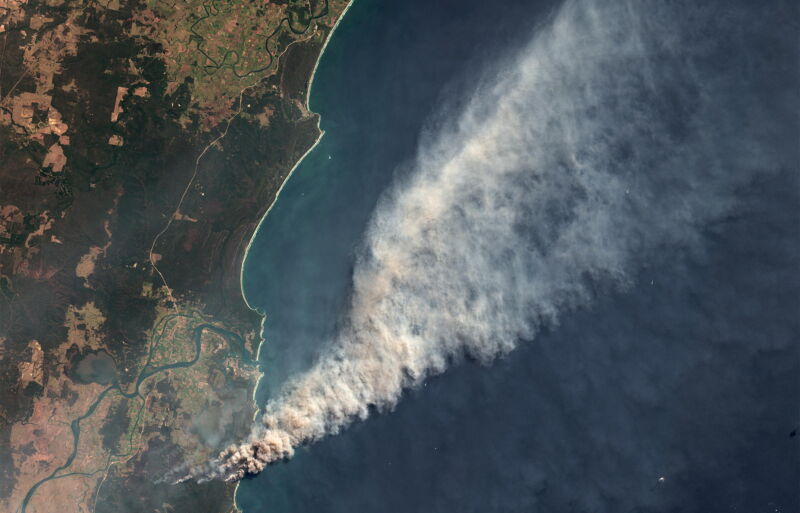Wildfire smoke from Australia fueled three-year “super La Niña”

Enlarge / Wildfire smoke hovers over the Pacific coast of northern New South Wales, Australia in September 2019. (credit: Orbital Horizon/Copernicus Sentinel Data/Gallo Images via Getty Images)
The aerosol fallout from wildfires that burned across more than 70,000 square miles of Australia in 2019 and 2020 was so persistent and widespread that it brightened a vast area of clouds above the subtropical Pacific Ocean.
Beneath those clouds, the ocean surface and the atmosphere cooled, shifting a key tropical rainfall belt northward and nudging the Equatorial Pacific toward an unexpected and long-lasting cool phase of the La Nina-El Nino cycle, according to research published today in Science Advances.
Aerosols from wildfires are basically fire dust-microscopic bits of charred mineral or organic matter that can ride super-heated wildfire clouds up to the stratosphere and spread across hemispheres with varied climatic effects, depending on where they're produced and where they end up.